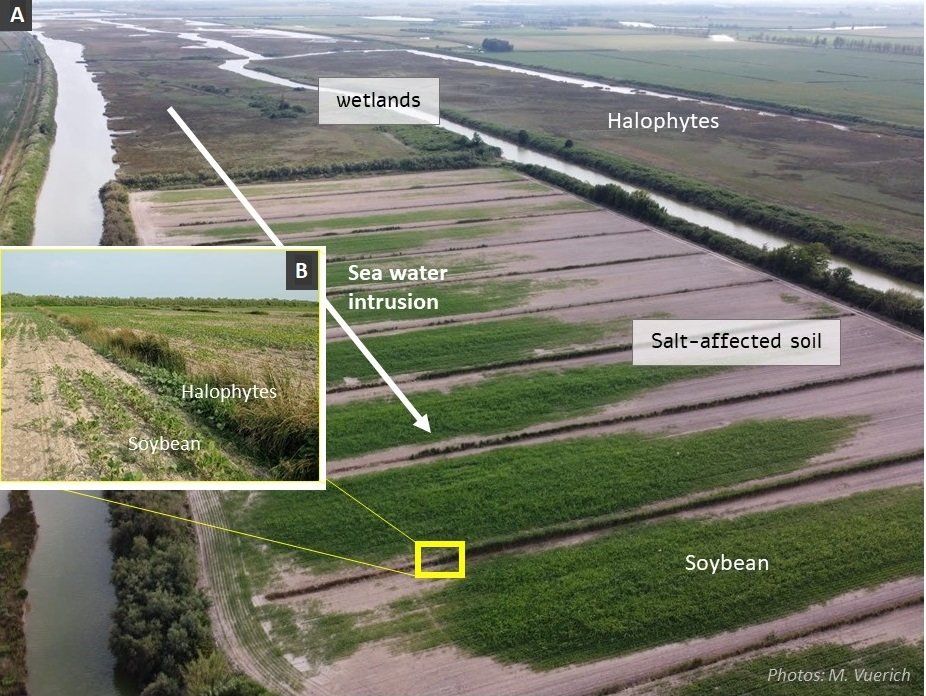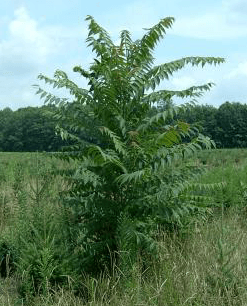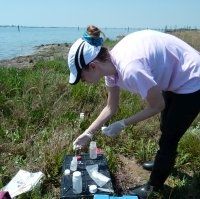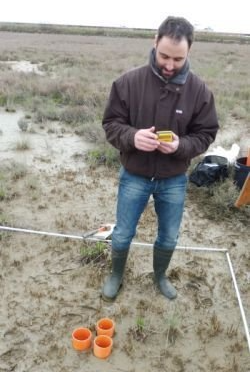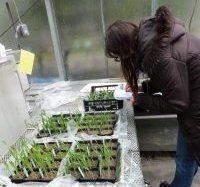Research topics and thesis offers
Click on topics and discover the
ongoing projects at the ESF and find out possible research topics for your
thesis project. Your own idea is also highly welcome! We will try our best to support it.
A project dealing with root radial oxygen loss in wetland species and rice.
Beyond the causes of the common reed die-back syndrome.
Facing salt stress in crops and in agricultural soils.
Soil contamination under the view of the Ecological Risk Assessment.
Selected proposals under evaluation and collaborations
Insect frass as new source for future agriculture
Check out also possible Internships with private companies collaborating with us.
Thesis' projects abroad
in collaboration with other research institutes.
Some examples of past projects of students performed at our labs.
Roots in armour! the ROLLBAR project
The project has been granted by the European Committee and referred to my
Marie Skłodowska-Curie individual fellowship H2020-MSCA-IF-2018-839542
ROLLBAR focused on the role of two contrasting strategies against sulfide toxicity of saltmarsh plant species: i) root radial oxygen loss (ROL) and ii) formation of a root barrier to ROL. The role of ROL and a root ROL barrier in protecting roots from phytotoxin intrusion in plant tissues is still controversial.
The project aims to address three major scientific questions: i) which chemical compounds trigger the formation of a root barrier to ROL? ii) can the ROL barrier prevent sulfide intrusion into roots? and iii) can ROL and iron plaques reduce sulfide intrusion into roots?
-
Methylene blue staining
ButtonRadial oxygen loss (ROL) in Puccinellia festuciformis based on the methylene blue staining technique
-
microOptodes
ButtonSensors with high resolution for direct measures of oxygen concentration
-
Iron plaques
ButtonPlaques induces on roots of a wetland species (Puccinellia genus)
-
Planar Optode
ButtonTheoretical principles of the planar optode technique
Project updates
02/09/2021 - The project has been recently concluded but additional results will be soon available! The work on iron plaques turned to be quite challenging during the lock-down but preliminary results interesting evidences on the physical effect of plaques on ROL. Data are under processing.
06/07/2021 - ROL can be measured in different ways, some are qualitative or semi-quantitative, others are quantitative and can be very precise. With my team and a fruitful collaborations with prof. Mikio Nakazono and dr. Juan Jiménez, we are summarising all the available methodologies for measuring ROL. From planar optodes to microsensors, we will provide protocols for new possible unexperienced users.
20/05/2021 - thanks to Lucas Peralta efforts, we have now published an exciting paper in New Phytologist on novel functions of the barrier to ROL in restricting diffusion of gases other than oxygen. Interesting, the barrier seems to have a potential role in drought tolerance, a trait that we are going to investigate further!
20/11/2020 - In presence of iron, plaque formation depends on root radial oxygen loss (ROL), soil redox and pH conditions. Salinity is also an important factor to consider, especially due to the expected increase of the sea level in coastal areas. Salinity can improve plaque formation but also can enhance plaque dissolution. Iron oxides dissolution in presence of salt can e.g. enhance iron uptake in plants. To test the hypothesis of plaque dissolution in presence of salt, the salt treatment will be imposed on artificial roots with well-formed plaques.
11/06/2020 - Iron plaques are commonly found on root surfaces of wetland and aquatic plants. Radial oxygen loss (ROL) is the main responsible for iron oxidation and precipitation on root surfaces. Nevertheless, plaques are formed when reduced iron is present, which is known to trig the formation of the ROL barrier and reduce rhizosphere oxidation. In order to disentangle the effect of the barrier and of iron plaques on ROL, I’m going to use artificial roots and induce plaques under controlled laboratory conditions.
15/11/2019 - the selection of a model plant using wild species is an effort. Many studies where conducted on rice genotypes but no information is available on wild wetland species about the presence of a constitutively formed or an
inducible barrier to ROL. I am currently growing
wild plants and testing the presence of a barrier using the methylene blue staining technique, a simple method to visualise the oxygen released radially from roots. When oxygen is loss, the methylene reagent turns to bluish and reflects the absence of a barrier.
Common reed die-back and climate change: where is the link?
L'Oréal-UNSECO award For Women in Science, year 2021
The reed die-back syndrome has severely affected Phragmites australis populations in Europe and North America. Eutrophication and salinity, caused by sea level rise, were indicated as causes of this phenomenon, but their mechanism of action is not clear. My hypothesis is that die-back resides on the impaired nutrient status of plants in brackish waters and on nutrient deficiency caused by modifications at the plant-soil inetrface. A key role could be played by Fe plaques, which can enhance or reduce the availability of specific micronutrients.
The project aims to clarify how changes in salinity and humic substances (amount and redox properties) affect the nutritional status of common reed (P. australis) through their effect on Fe plaques.

Thesis offer!
Project 1: Iron plaques as a winning trait against Na+ intrusion in Phragmites australis
The aim of the project is to assess the advantage of individuals with iron plaques to tolerate moderate to high levels of salinity and their uptake ability towards key elements.
The hypothesis is that the presence of iron plaques can improve plant tolerance to salt stress, by regulating nutrient uptake.
Project 2: Do humic substances interfere with iron plaque formation?
The main objective is to characterised iron plaques formed in presence or absence of humic substances, in order to test the possible different ability of plaques to trap (and release) micro and micronutrients.
It is expected that plaques formed in presence of humic substances can improve plant growth because of their their function of element "trapping" and subsequent constant release at the root surface.
Project 3: Screening study of wetland species ability to form iron plaques under different conditions of flood and salt stress
The main aim is to test how field conditions with different flooding and salinity stress affect the formation of plaques on wild wetland species. Plants will be collected in the field and analysed for plaque content and root and shoot traits.
It is expected that flood and salt tolerant species can develop more plaques, which in turn can increase resilience towards the abiotic stress.
SalStrAl
inter-departmental
project
The project aims to improve knowledge on action mechanisms of humic substances (HS) and halotolerant plant growth-promoting rhizobacteria (HT-PGPR) in alleviating salt stress in crops, in order to implement a combined protocol for maintaining acceptable crop yields in salt-affected soils. In particular, the project challenges the use of HS, derived from sources available in great quantity and at low costs, together with HT-PGPR strains, extracted from the rhizosphere of key halophytes, in improving germination and growth of two target crops, i.e. maize and soybean.
Primary objectives are: i) to investigate how appropriate HS preparations may modify the rhizosphere; ii) and to individuate HS properties affecting HT-PGPR inoculation success in soil.
Thesis project offer!
Project 1: Humic substances as a future strategy against soil salinization
The project aims at investigating the mechanisms behind the benefits of humic substances as biostimulants in salt-affected soils.
Moving from lab conditions to a field-simulated experiment, the hypothesised Na+ entrapment capability of humic substances will be monitored.
Project 2: Response of halo tolerant plant growth-promoting bacteria to reactive organic matter
The aim of the project is to analysed the benefits that rizobacteria can obtain from the presence of humic substances in soils.
The idea to test is if humic substances can boost baterial activity which in turn can facilitate plant growth.
Mercury contamination
Environmental Risk Assessment for Hg: from mobility in soil to bioaccumulation in crops
The Environmental Risk Assessment is a complex approach aimed at investigating the "spread" of a contaminant in different compartments of the environment, up to human health. Specifically, our focus is on the toxicity of Hg to soil microbial biomass and its potential uptake by crops in contaminated soils.
The project is funded by Regione Friuli-Venezia Giulia (year 2022-2023).
Thesis project offer!
Project 1: Mobility of chemical forms of mercury in soils affected by seawater intrusion
Preliminary data shows that mercury mobility is enhanced at increasing soil salinity, and especially for methylmercury. The hypothesis is that seawater intrusion can strongly affect contaminated soils in terms of microbial activity and plant uptake. Even in soils characterised by stable Hg forms (cinnabar), the increase of salinity can affect cultivated fields exposed to seawater intrusion.
Project 2: Mercury uptake in crops and risks for human health
Mercury is still a concerning issue in the North Adriatic sea and despite the conspicuous literature on Hg in sediments and fishes, less was done on crops and vegetables, despite a direct potential source of Hg for humans.
The project aims at measuring Hg levels in crops grown in naturally contaminated soils, in order to evaluate possible risks for human nutrition.
Composting
Our group collaborates with the University of Bologna and 4 different private companies in order to i) develop a high performant compost at home and ii) test compost derived from biogas production in the field, in terms of efficacy and food safety.
Interesting option to combine research, future technologies and society needs? The collaboration is just started. Many project opportunities are and will be available!
Tenebrio frass
The circular economy requires an efficient and non-wasting use of resources. An urgent reduction of pesticides and fertilizers is also required while ensuring adequate field productivity and protecting food quality. The project moves in this direction by considering the Tenebrio larvae frass a potential new resource for future agriculture.
Intriguing topic? Ask us for more details and project opportunities!
Internships
at our lab or with private companies
We highly recommend getting trained in our lab if you plan to develop your thesis project with us. We will introduce you to all basic techniques of sample preparation, analysis and data interpretation.
Our group also collaborates with the companies SICIT Group, SCAM S.p.A. and HARPO S.p.A. on joined research project. Short term projects and internships are available with these two companies.
Prof. Marco Contin has a long established collaboration with SICIT group on biostimulants. The company is among the few companies in the world using amino acids in the market of biostimulants in agriculture, of which it is now a world leader.
SCAM S.p.A. deals with plant nutrition in crop systems by producing organo-mineral fertilizers of low impact on the environment.
HARPO S.p.A.
develops
green roofing systems and has a particular interest on substrates. It aims at increasing substrate quality and performance while mantaining plant biomass productivity.
Looking for an experience abroad? Transboundary projects for students!
in collaboration with the University of Neuchâtel
Pedofauna biodiversity of three plantations
Biodiversity of tree plantations improves the quality of soil organic matter by its humification and its organic-mineral complexes stabilization. Earthworms play a fundamental role in soil mixing and favour aggregation of soil mineral particles that in turn leads to improved soil structure. Should we expect some effects of plant species richness on earthworm populations?
The main aim of the work is to investigate the effect of tree biodiversity on the composition of pedofauna in soils of 20 years old tree plantations and in relation to potential soil C sequestration. The study will focus on earthworms and on the relationships between ecological categories, biomass and abundance.
Plant invasion in the karst environment
Ailanthus altissima is one of the most aggressive and dangerous species in the north east of Italy. The species releases from roots allelopathic substances to avoid competition and its growth rate is much larger that that of autochthonous species. Plant invasion affects vegetation dynamics, soil properties, microbial communities and pedofauna biodiversity.
The main objective of the work is to investigate the effect A. altissima invasion on soil biodiversity, focusing on earthworm community as target group. We expect a larger biodiversity in natural environments compared to monospecific populations of A. altissima , even if the abundance of earthworms could be larger due to the larger plant biomass of the invader.
Overview of selected past student projects
SPS method for soil AVS determination
A new colorimetric method was developed at the University of Udine, Soil Chemistry section, for the field determination of soil AVS, a particular fraction of soil sulfides.
(bachelor thesis F. Bertolutti, 2015)
SEM/AVS approach for potential toxicity risk assessment
The SEM/AVS approach is a simple index to estimate the potential toxicity risk for plants and animals due to soil metals. When the ratio is > 1, a plausible risk is expected.
(master thesis P. Bartolucci, 2017)
Hg uptake in crops
Hg uptake was tested in barley using natural contaminated soils (Isonzo river) or lab treated sediments. The treatments referred to different chemical forms of Hg, with consequently different bioavailability.
(bachelor thesis S. Clinori, 2018)
Silvia's thesis was awarded in 2021 as best bachelor thesis on ecosystems and waters of the Isonzo area!








